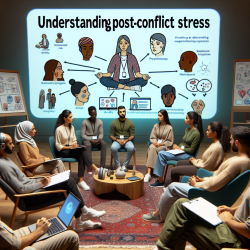Education is a pathway to unlocking the potential within every student, but the journey varies significantly, especially for those with learning disabilities, autism spectrum disorder (ASD), and emotional and behavioral disorders (E/BD). One key to navigating this journey successfully is the accommodation of clarifying, simplifying, and repeating directions. This approach, backed by research from the National Center on Educational Outcomes (NCEO), shows promising benefits for a diverse group of learners, including English learners with disabilities.
What is Clarifying Directions?
Clarifying directions involves simplifying the language used in instructions or repeating and reading directions aloud. This accommodation aims to make directions more accessible to students who might struggle with complex language or instructions, thereby supporting their ability to demonstrate their knowledge and skills more effectively.
Research Findings on Clarifying Directions
The benefits of clarifying directions are not limited to one group of students. Research indicates that this accommodation has aided students with learning disabilities, ASD, and E/BD, as well as English learners with disabilities. Studies have shown that clarifying directions can be one of the most frequently used and effective accommodations, particularly in reading and math tests.
Implementation Insights
The implementation of clarifying directions varies, with studies highlighting its frequent use across different educational settings. Interestingly, only a few studies have delved into the direct effects of this accommodation on student performance. Among these, improvements in test scores were noted for English learners with disabilities, suggesting that while there may not be a level playing field, this accommodation does contribute to bridging the gap.
Perceptions of Clarifying Directions
The perception of clarifying directions as a beneficial accommodation is shared among special education teachers and elementary teachers alike. Teachers recognize its value in enhancing academic and cognitive function, particularly for students with LD and ASD. Moreover, teachers of English learners with LD have noted that simplifying language in directions can prevent distractions, allowing students to better demonstrate their content area knowledge.
Looking Ahead
While the existing research underscores the importance of clarifying, simplifying, and repeating directions as an accommodation, there is a call for more current studies to further understand its impact and effectiveness. The evolving nature of educational environments, especially with the increasing use of online therapy services like TinyEYE, highlights the need for ongoing research in this area.
Clarifying directions stands out as a commonly used and impactful accommodation, offering a beacon of support for students navigating the challenges of learning disabilities, ASD, E/BD, and more. As we strive to make education more accessible and inclusive, the role of such accommodations becomes ever more critical.
For more information, please follow this link.










